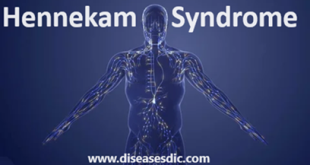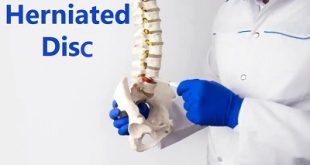What is Hemifacial Spasm?
Hemifacial spasm causes involuntary painless twitching on one side of the face due to malfunctioning of the seventh cranial nerve, also known as the facial nerve. It causes the muscles on one side of the face to contract. In its mildest form, the condition may cause no more harm other than slight inconvenience. However, in severe cases, the contractions may interfere with vision. In hemifacial spasm, muscles on one side of the face twitch involuntarily, beginning with the eyelid and then spreading to the cheek and mouth. Twitching may be irregular at first but may become frequent afterwards. The spasms may be caused by an abnormally positioned loop of an artery that compresses the facial cranial nerve where it exits the brainstem. Medical experts have suggested that the condition is caused by disturbances within the facial nerve.
Types of Hemifacial Spasm
It is involuntary facial twitching or muscle spasms on one side or half of the face. There are two types of hemifacial spasms:
Typical hemifacial spasm
This type usually starts with an involuntary tic or twitching near the eye. Over time, typical HFS progresses down the same side of the face that initially presented symptoms near one eye. The vast majority of hemifacial spasms are classified as “typical.”
Atypical hemifacial spasms
In this type of spasms start lower on one side of the face and progress up the same side of a person’s face. Atypical hemifacial spasm often starts in the orbicularis oris muscle around the lips or the buccinator muscle in the cheekbone area. Fewer than one in 10 people with hemifacial spasm experience atypical spasm progression from the lower to the upper face.
Epidemiology
The incidence is approximately 0.8 per 100,000 persons. It is more prevalent among females over 40 years of age. The estimated prevalence for women is 14.5 per 100,000 and 7.4 per 100,000 in men. Prevalence for hemifacial spasm increase with age, reaching 39.7 per 100,000 for those aged 70 years and older. One study divided 214 hemifacial patients based on the cause of the disease: The patients who had a compression in the facial nerve at the end of the brainstem as the primary hemifacial spasm and patients who had peripheral facial palsy or nerve lesion due to tumors, demyelination, trauma, or infection as secondary hemifacial spasm.
The study found that 77% is due to primary hemifacial spasm and 23% is due to secondary hemifacial spasm. The study also found both sets of patients to share similar age at onset, male to female ratios, and similar affected side. Another study with 2050 patients presented with hemifacial spasm between 1986 and 2009, only 9 cases were caused by a cerebellopontine angle syndrome, an incidence of 0.44%.
Pathophysiology
Chronic irritation of the facial nerve nucleus and proximal nerve segment (root) due to several underlying etiological factors is the main pathophysiologic mechanism of hemifacial spasm. Compression of the facial nerve root at the junction of the central (point of exit from brainstem) and peripheral segment (root exit/entry zone) by aberrant/ectatic blood vessels is the most common cause of hemifacial spasm as reported in the literature. The root exit/entry zone is the area of transition of oligodendroglial (central myelination) to Schwann cells (peripheral myelination). Compression of this zone leads to the demyelination of axons in the region. Several theories have been proposed to explain the pathophysiological mechanism by which facial nerve compression leads to hemifacial spasm.
Nerve Origin Hypothesis/Peripheral Theory
As proposed in this theory, ephaptic transmission of impulses, or the lateral spread of excitation to adjacent nerve fibers, leads to abnormally excessive firing of the facial nerve. This is due to the demyelination of the facial nerve at the site of compression. Myelin is an insulating material and plays an important role during nerve impulse conduction by preventing such abnormal lateral spread resulting in ectopic transmission of impulses that cause hemifacial spasm.
Nuclear Origin Hypothesis/Central Theory
Irritation of peripheral afferent facial nerve fibers leads to aberrant signaling to the central facial nerve nucleus leading to the abnormal firing of the nucleus. This facial nucleus hyperexcitability results in involuntary myoclonic contraction of facial muscle on the affected side.
Causes of Hemifacial Spasm
It can be caused by injury, compression, or damage to the facial nerve. This leads to abnormal firing of the facial nerve that causes involuntary muscle contractions.
The facial nerve starts in the base of the brain and branches along the side of the face to control the facial muscles. Anything that irritates or interrupts this pathway can cause hemifacial spasm to develop.
The most common cause is the compression of the facial nerve by abnormally developed or irregular blood vessels. Structural differences in the shape of the skull can also compress the facial nerve.
Hemifacial spasm can also be caused by other underlying illnesses (called secondary hemifacial spasm), including:
- Neurologic disorders such as demyelinating disease, which can break down nerves, or a stroke, which can slow blood flow to structures in the brain.
- Masses or tumors in the ear, under the chin, or in the brainstem that compress the facial nerve.
- Ear infections can lead to facial nerve irritation or compression since the facial nerve exits the skull below the ear.
What are the symptoms of hemifacial spasm?
The first symptom of a hemifacial spasm is involuntarily twitching on only one side of your face. Muscle contractions often begin in your eyelid as mild twitching that may not be too disruptive. This is known as a blepharospasm. You may notice that the twitching becomes more pronounced when you’re anxious or tired. Sometimes, these eyelid spasms can cause your eye to close completely or cause your eye to tear up.
Over time, the twitching may become more noticeable in the areas of your face that it already affects. The twitching may also spread to other parts of the same side of your face and body, including the:
- Eyebrow
- Cheek
- Area around your mouth, such as your lips
- Chin
- Jaw
- Upper neck
In some cases, it can spread to every muscle in one side of your face. Spasms may also still happen while you’re sleeping. As the spasms spread out, you may also notice other symptoms, such as:
- Changes in your ability to hear
- Ringing in your ears (tinnitus)
- Ear pain, especially behind your ear
- Spasms that go down your entire face
Complications of hemifacial spasm
Hemifacial spasm is a neurological condition characterized by involuntary muscle contractions on one side of the face. While the symptoms can be bothersome and affect quality of life, the condition itself typically does not lead to life-threatening complications. However, there are some potential complications associated with hemifacial spasm, including:
Functional Impairment: The involuntary muscle contractions can affect normal facial movements, making it difficult to blink, speak, eat, and express emotions.
Social and Psychological Impact: The visible twitching and spasms can cause embarrassment, self-consciousness, and social anxiety, leading to decreased self-esteem, social withdrawal, and depression.
Eye Problems: The constant muscle contractions may disrupt blinking, causing dryness, irritation, and potential damage to the eye’s surface. This can increase the risk of eye infections and corneal ulcers.
Discomfort and Pain: Hemifacial spasm can cause muscle fatigue, tension, headaches, and facial pain due to the continuous twitching and spasms.
Rarely, Underlying Causes: In some cases, an underlying condition may be responsible for hemifacial spasm. If left untreated, it can lead to progressive nerve damage or complications associated with the underlying condition.
Remember, not everyone with hemifacial spasm experiences these complications, and the severity can vary. It’s important to consult with a healthcare professional for proper diagnosis and management options.
Risk factors
The exact cause of hemifacial spasm is not fully understood. However, several factors have been associated with an increased risk of developing the condition. Here are some potential risk factors:
- Age: Hemifacial spasm is more common in middle-aged and older individuals.
- Gender: Women have a higher risk of developing hemifacial spasm compared to men.
- Blood Vessel Compression: In some cases, a blood vessel compressing the facial nerve can lead to hemifacial spasm.
- Family History: Having a family member with hemifacial spasm increases the risk.
- Previous Facial Nerve Injury: Previous injury or trauma to the facial nerve can increase the risk of developing hemifacial spasm.
- Other Neurological Conditions: Certain neurological conditions like trigeminal neuralgia and Bell’s palsy are associated with a higher risk of hemifacial spasm.
Remember, having one or more risk factors does not guarantee the development of hemifacial spasm.
Diagnosis
You may visit our clinics nearby for hemifacial spasms treatment, if you have any of the symptoms of hemifacial spasm or you suspect you have hemifacial spasm, for proper diagnosis. You must brief the doctor about your medical history and the symptoms you have developed. After initial discussions, your doctor may diagnose hemifacial spasms in following ways:
Physical evaluation: The doctor would do physical examination and see your twitching etc. He would like to assess the severity and duration of your twitches. If the doctor is convinced that you have hemifacial spasm then he would recommend medical imaging testing.
Magnetic resonance imaging (MRI): The doctor would do this test to identify the cause of your hemifacial spasm. In this test, radio waves and magnets are used to create images of the inside of your body. This test would be done to rule out or identify tumors, brain lesions, multiple sclerosis or any other structural abnormalities that may create similar symptoms.
This test may detect abnormal loop of artery that may be pressing against your facial nerve causing twitches and involuntary movements in your face.
Treatment
There are several types of treatment for hemifacial spasms. The treatment that your doctor selects will depend on the cause and severity of your condition. Treatments for hemifacial spasm include:
Botox (botulinum toxin) injections
Botox injection is the most commonly used and the most effective treatment of hemifacial spasm. To relieve the spasms, your doctor will inject Botox into the affected muscles to paralyze them. This treatment will need to be repeated every few months.
Microvascular decompression surgery
If your disorder is more severe, your doctor may recommend microvascular decompression surgery. In this surgery, your surgeon opens the hard layer covering your brain to locate the blood vessel that is pressing on your facial nerve. Your surgeon then places a small sponge between the nerve and blood vessel to reduce the pressure on the nerve. This surgery is effective in reducing spasms, but it has several possible side effects and so it is only done if botox injections aren’t effective enough in reducing the symptoms.
About 90% of patients return to their regular life style after two months. Like all surgeries, there are risks. More frequent side effects include decreased hearing and facial weakness. Your surgeon will use intra-operative monitoring of the 7th (facial) and 8th (hearing) nerves during surgery to decrease these complications. In 90% of surgical cases there appears to be a blood vessel compressing the nerve. In general, results of surgery including:
- 85% experience immediate relief from spasms
- 9% report diminished spasms
- 2% report delay in facial spasm in the month following surgery
- 7% experience a recurrence of spasms after surgery
Medications
In some cases, medications, such as anticonvulsant drugs (e.g., carbamazepine and clonazepam), can reduce lip muscle spasms.
Prevention of Hemifacial Spasm
Unfortunately, there are no known specific prevention methods for hemifacial spasm. The condition is typically caused by compression of the facial nerve by a blood vessel, which is not easily preventable. However, there are some general measures that may help in managing the symptoms and reducing the frequency or severity of episodes. These include:
- Stress Management: Practicing stress reduction techniques like deep breathing, meditation, regular exercise, and sufficient sleep may help manage the condition.
- Identify and Avoid Triggers: Recognize personal triggers that worsen symptoms, such as caffeine, alcohol, bright lights, or specific facial expressions, and try to avoid them.
- Eye Care: Use lubricating eye drops or ointments recommended by an eye specialist to prevent dryness and irritation of the eyes.
- Medication Management: Take prescribed medications as instructed by a healthcare professional to reduce the severity and frequency of muscle contractions.
- Surgical Options: In some cases, surgical interventions like microvascular decompression may be considered if other methods are ineffective.
Remember, it is crucial to consult with a healthcare professional for personalized advice and treatment options based on individual circumstances.
 Diseases Treatments Dictionary This is complete solution to read all diseases treatments Which covers Prevention, Causes, Symptoms, Medical Terms, Drugs, Prescription, Natural Remedies with cures and Treatments. Most of the common diseases were listed in names, split with categories.
Diseases Treatments Dictionary This is complete solution to read all diseases treatments Which covers Prevention, Causes, Symptoms, Medical Terms, Drugs, Prescription, Natural Remedies with cures and Treatments. Most of the common diseases were listed in names, split with categories.







